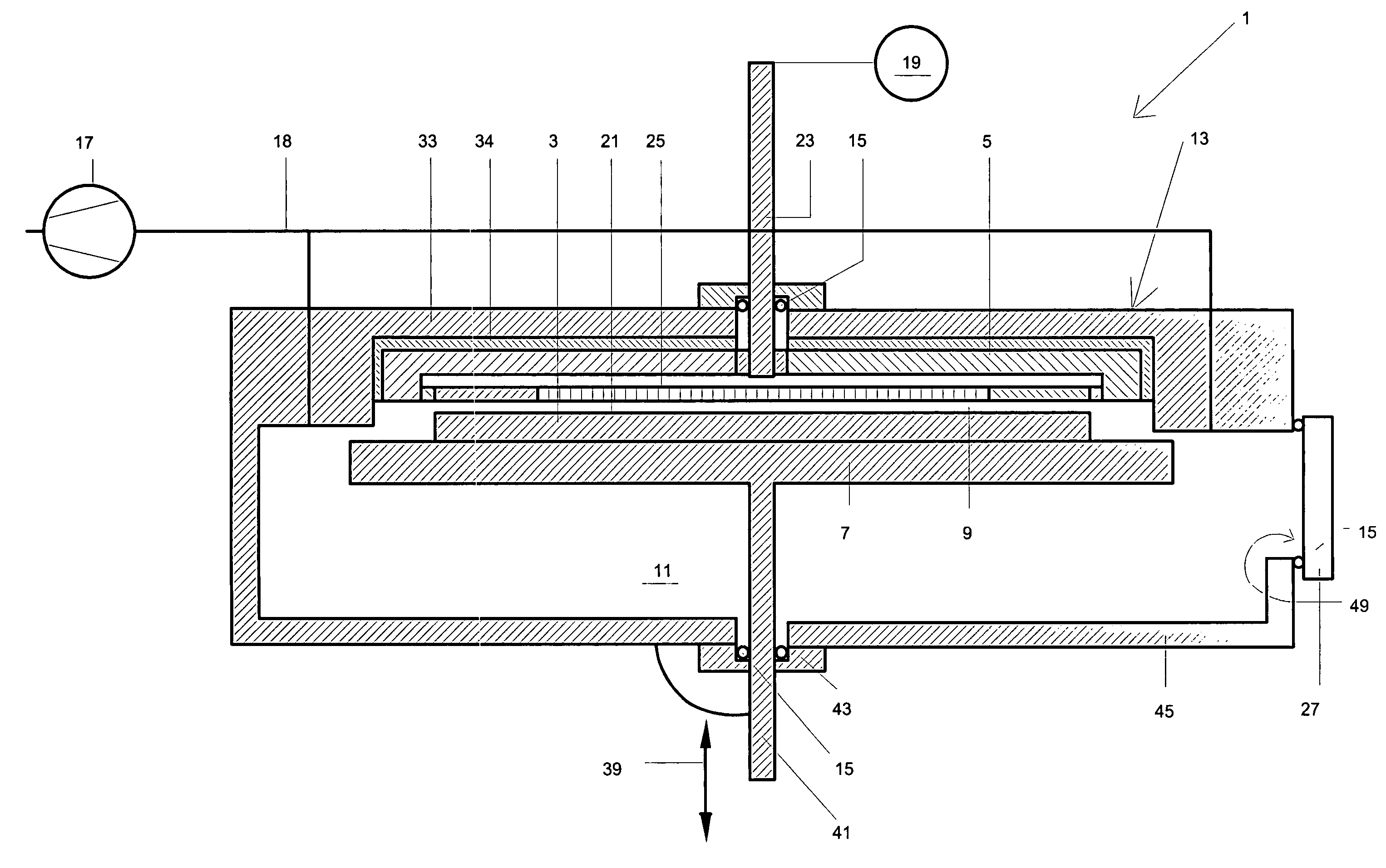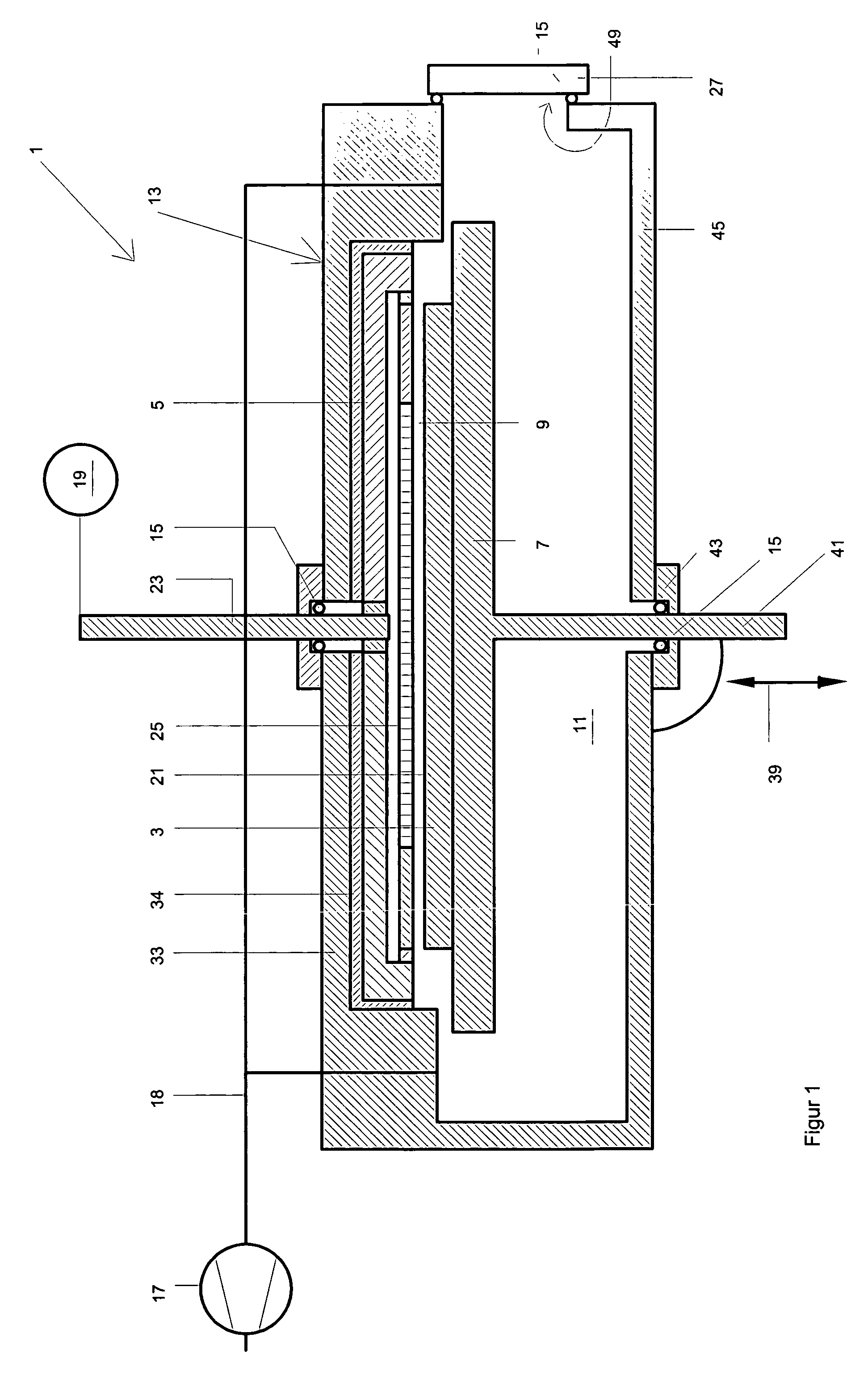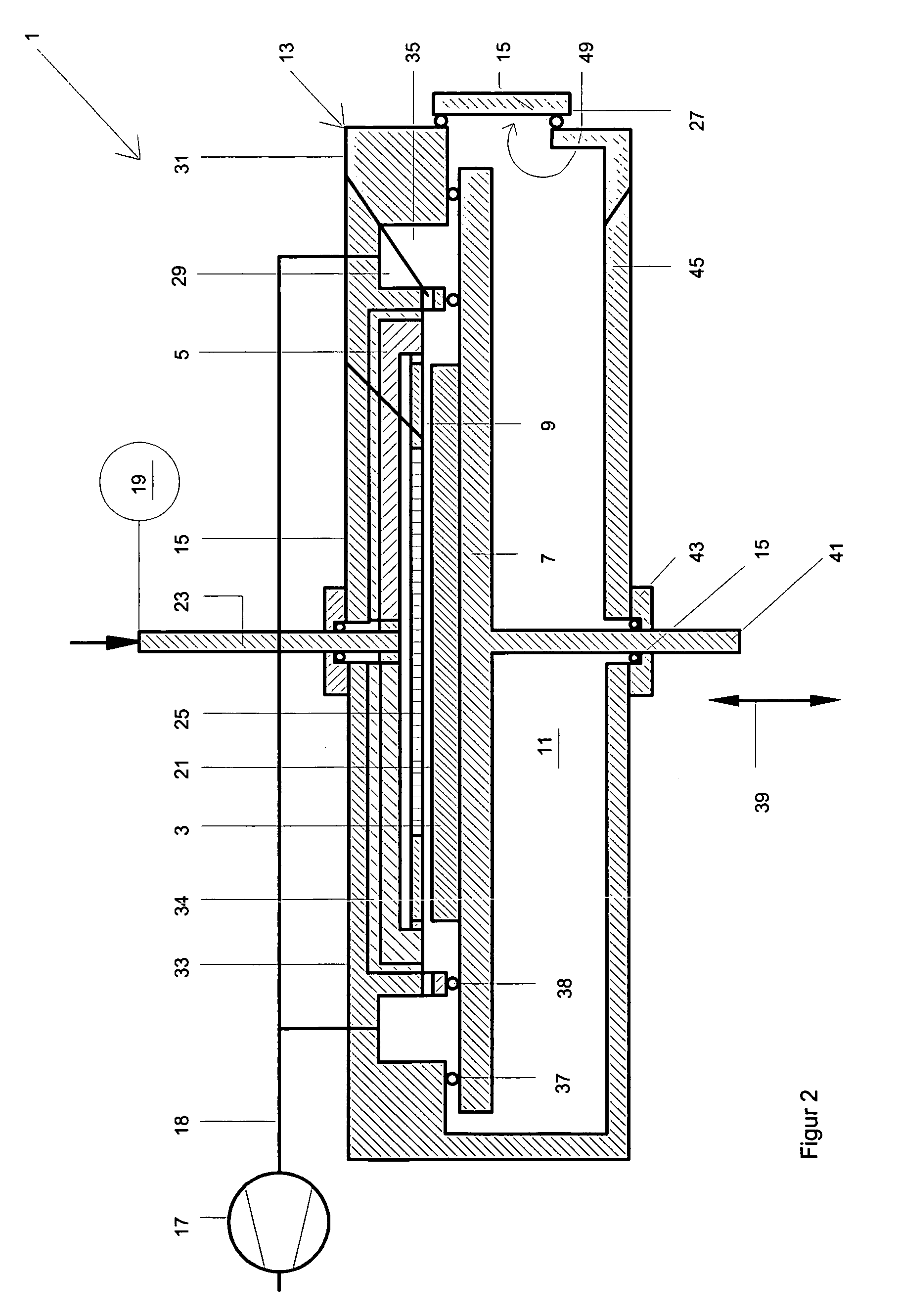Treatment system for flat substrates
a flat substrate and treatment system technology, applied in the direction of ion implantation coating, chemical vapor deposition coating, coating, etc., can solve the problems of high structural outlay, limited throughput, and large central handling device, so as to improve the production of flat substrates, reduce the number of process chambers, and reduce the cost of treatmen
- Summary
- Abstract
- Description
- Claims
- Application Information
AI Technical Summary
Benefits of technology
Problems solved by technology
Method used
Image
Examples
Embodiment Construction
[0026]The following explanation of reactors, handling, devices and methods for processing flat substrates will focus on structural aspects, where it is obvious to the person skilled in the art that these devices and methods are provided with sensors, heating and cooling units, control units and drives that are not specifically illustrated.
[0027]FIG. 1 shows, in a simplified illustration, a reactor 1 for the treatment of flat substrates 3. The reactor 1 can be designed as a PECVD reactor, for example. The reactor 1 comprises a process space 9 with an electrode 5 and a counterelectrode 7, which are designed for generating a plasma for the treatment of a surface to be treated of one or a plurality of flat substrates 3. The electrodes 5, 7 can be connected, or may have been connected, to a voltage source not illustrated in greater detail, preferably a radio-frequency supply source, in order to generate an electric field in the process space 9. The electrodes 5, 7 are preferably designed...
PUM
| Property | Measurement | Unit |
|---|---|---|
| Angle | aaaaa | aaaaa |
| Angle | aaaaa | aaaaa |
| Angle | aaaaa | aaaaa |
Abstract
Description
Claims
Application Information
 Login to View More
Login to View More - R&D
- Intellectual Property
- Life Sciences
- Materials
- Tech Scout
- Unparalleled Data Quality
- Higher Quality Content
- 60% Fewer Hallucinations
Browse by: Latest US Patents, China's latest patents, Technical Efficacy Thesaurus, Application Domain, Technology Topic, Popular Technical Reports.
© 2025 PatSnap. All rights reserved.Legal|Privacy policy|Modern Slavery Act Transparency Statement|Sitemap|About US| Contact US: help@patsnap.com



